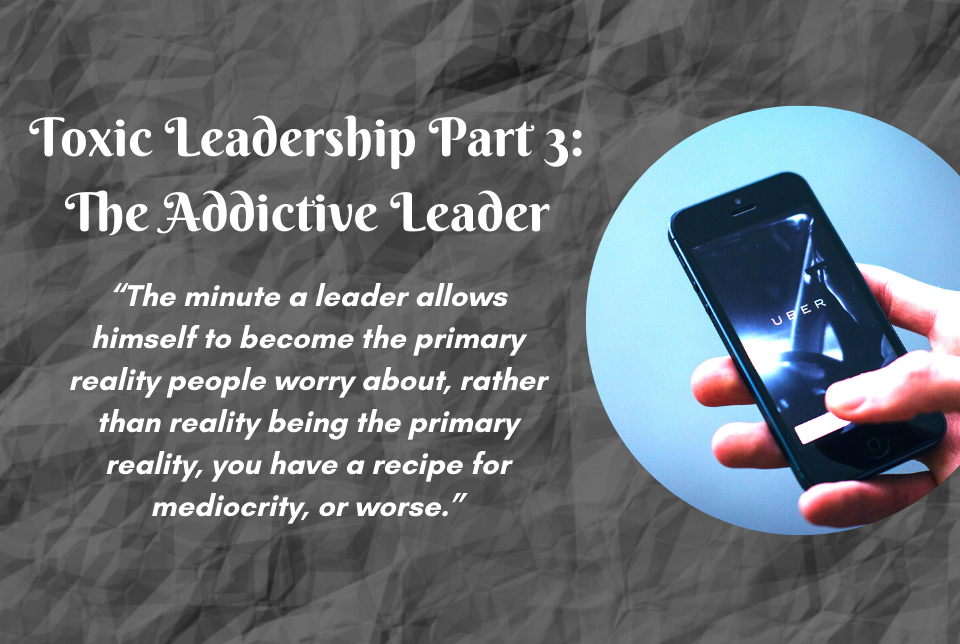Misconception #3: Servant Leadership only Works in Certain Circumstances
This is the 4th in a series on the topic of Misconception and Objections to Servant Leadership. Why, after all these years, is servant leadership not more practiced? Why is this powerful approach so easily dismissed as being irrelevant or impractical to day to day organizational life? This series explores the common misconceptions that often result in leaders ignoring a way of leading that can bring their organizations greater health and higher performance.
Misconception #3: Servant Leadership only Works in Certain Circumstances
Is servant leadership an approach that only works for certain types of leaders, in certain types of organizations? Or, is it limited to leaders of a particular personality within a particular organizational setting? If servant leadership only works in certain circumstances, then it is understandable why servant leadership is not more prevalent in organizations today. But, this is not the case. This is a misconception of what servant leadership is all about; a misconception that presents three distinct challenges to the acceptability of this powerful way of leading.
Let’s explore each of these three challenges.
1. Servant leadership Is merely one style of leadership among many styles
Unfortunately, in the scholarly leadership literature, servant leadership is treated as one style among many; as a choice that should be applied situationally rather than as a mindset of leadership that serves as the foundation of our leadership regardless of the situation. This is complicated by the misconception that servant leadership is about being nice or about making everyone happy. This certainly is not the case. Servant leadership is best understood as a mindset; a way of thinking about leadership. We lead in order to serve the needs of our followers. We put the well-being of those we lead above our own self-interest. We resist the self-focus of an autocratic mindset or the patronizing attitude of a paternalistic mindset. The servant leader puts others first. In what leadership or organizational setting is this not appropriate? This does not mean that servant leaders must always give in to the desires or unreasonable demands of their workers. It just means that servant leaders always consider the needs of their followers over their own selfish interests as leaders. Servant leadership is not merely one style among many. It is a guiding mindset that undergirds everything we do as leaders.
2. Servant leadership only fits leaders with particular personalities
Many have bought into the misconception that servant leaders are soft, quiet personalities who only exist to please others (sounds a bit like co-dependence doesn’t it?). No, servant leadership should not be limited to a particular personality type; one that exudes deference and always yielding to the demands of others. If servant leadership is a mindset, a belief about leadership, then it can be practiced successfully by all personality types. The quiet, humble introverted leader can serve and the louder, more self-confident extroverted leader also can serve. Yes, the serving will look different in practice, but with the foundation of a servant leader mindset, the followers are well served, and a healthier organization is the result. We do servant leadership a disservice to frame it as limited to a particularly passive personality type. Servant leadership requires an aggressive and bold use of power to empower others to lead and to serve.
3. Servant leadership only works in certain organizations
There are some (many actually) who do not see servant leadership working in certain types of organizations such as the military, paramilitary or in institutions that require a firm hand and a strong dynamic type of leadership. Consider, for instance, a prison.
Consider McKean, a federal correctional institution medium-security prison in Bradford, Pennsylvania, led for several years by Warden Dennis Luther. Luther brought a servant-minded approach to this prison back in the 1990s with a firm belief in a ‘founding principle that an unconditional respect for prisoners leads to a positive, rehabilitating culture, in which prisoners have a stake in the prison as a community and ultimately reenter the world as engaged community members’ (Laub, 2018)
Based on this mindset, Luther developed a list of 28 guiding statements, a credo of beliefs, to guide how prisoners should be treated at McKean. Here are just a few of those principles:
- You must believe in a man’s capacity to change his behavior.
- Be responsive to inmate requests for action and information. Respond in a timely manner and respond the first time an inmate makes a request.
- Be dependable when dealing with inmates. If you say you are going to do something, do it.
- It is important for staff to model the kind of behavior they expect to see duplicated by inmates.
- Inmates are to be treated respectfully and with basic dignity. Staff can treat inmates respectfully without compromising the essential element of professional distance.
- Be courteous, polite, and professional in all dealings with inmates, regardless of their behavior.
- Never, never lie to an inmate. (Laub, 2018)
What was the result of this radically servant approach to leading in a prison setting? McKean became recognized by many as the most successful medium-security prison in the country.
Keeping prisoners at McKean cost the taxpayers about 72% per inmate compared to other federal institutions and the incident record had ‘No escapes. No homicides. No sexual assaults. No suicides. In six years, there have been three serious assaults on staff members and six recorded assaults on inmates, about the number of assaults other federal prisons see in one week. (Laub, 2018)
Pretty amazing isn’t it?
Leading with a servant mindset is the right thing to do but it also works. It brings results; In all kinds of organizations. The perceived limitations of servant leadership need to be reconsidered and this powerful approach to leadership viewed in a more accurate light. Why? There is too much at stake; too many workers suffering at the hands of uncaring, un-serving leaders. We can do better.
Your fellow servant,
Jim






